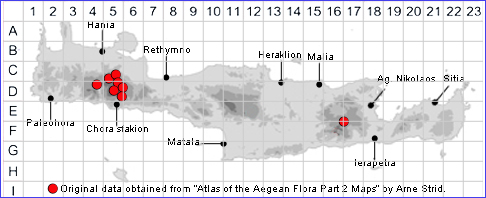
SPECIES DESCRIPTION
IBERIS SEMPERVIRENS
Family and Genus:- See- CRUCIFERAE
Common Name:- Evergreen candytuft
Homotypic Synonym:- Biauricula sempervirens, Iberis sempervirens var.
macropetala.
Meaning:- Iberis (L) Spanish. A name used by the Greek physician and botanist
Dioscorides for an Iberian cress-like plant.
Sempervirens (L) Always green.
General description:- Small, evergreen, spreading hairless shrub.
Stems:-
1) Generally 15-30 cm.
Leaves:-
1) Crowded towards tip of non-flowering shoots and scattered on flowering stems,
somewhat coriaceous, oblanceolate, obtuse.
Flowers:-
1) Inflorescence, subumbellate.
2) Pedicels, densely scabrid-papillose on the inner surface.
3) Petals, white or sometimes tinged pink or lilac, the outer 7-10 mm.
4) Infructescence, racemose, 15-40 mm.
Fruit:-
1) Siliculae, 6-8 x 4.5-7 mm, compressed, angustiseptate, broadly ovate to
suborbicular, glabrous, broadly winged towards apex; notch broad, exceeded
by the style.
Key features:-
1) Silicula, in racemes. longer than wide or suborbicular.
2) Perennial with woody or herbaceous stems, usually with non-flowering rosettes.
3) Leaves, 2·5-5 mm wide, oblong-spathulate, flat, obtuse; flowering stems lateral.
Habitat:- Rocky slopes, ridges, screes, open woodland, mainly on limestone. 700-
2000 m.
Distribution:- Throughout mainland Greece and Peloponnisos. Widespresd in
Europe and the Mediterranean region. Rare on Crete known only from the Lefka Ori
and Dikti massifs.
Flowering time:- April-mid-Aug.
Photos by:- Fotis Samaritakis
